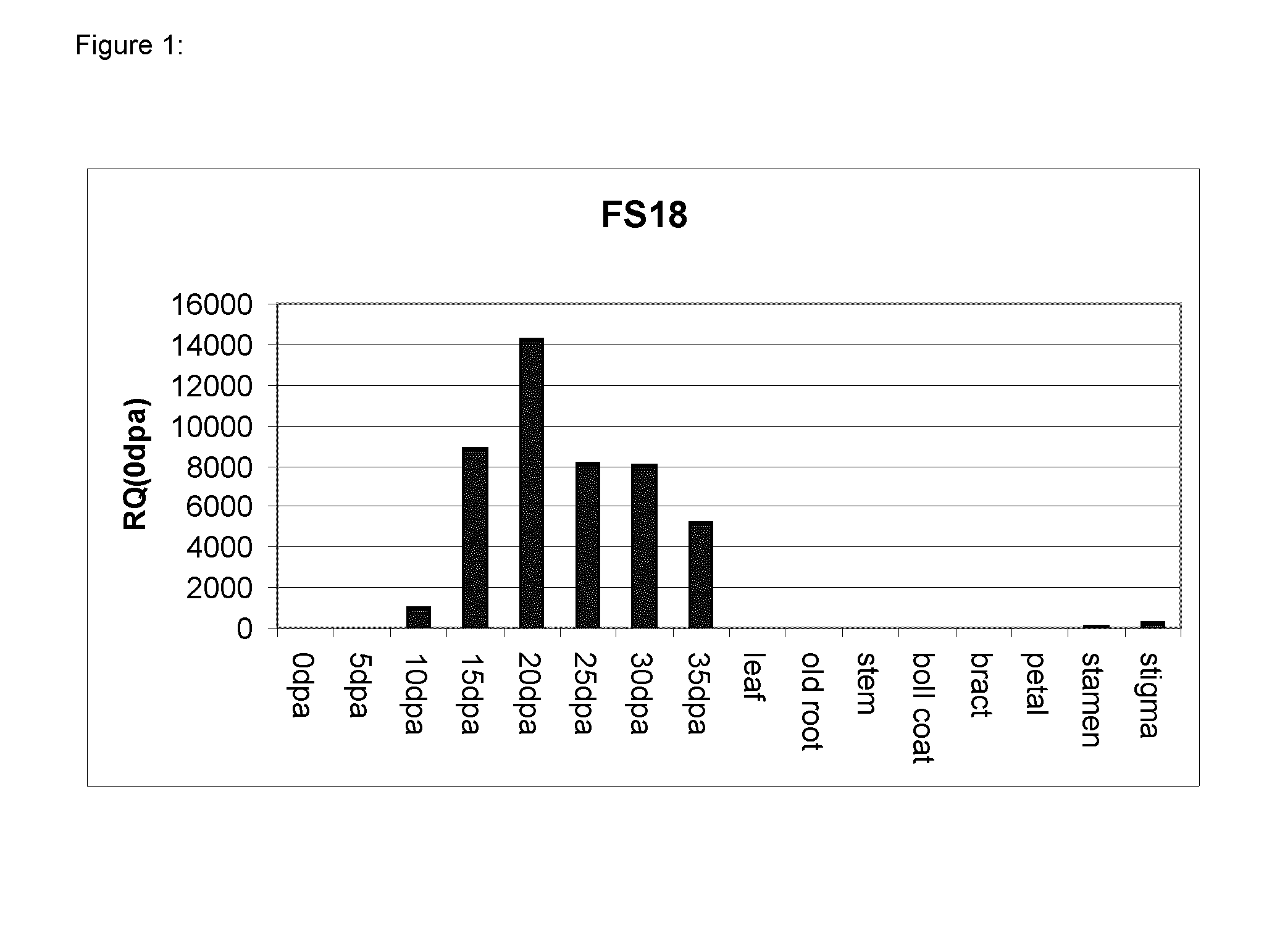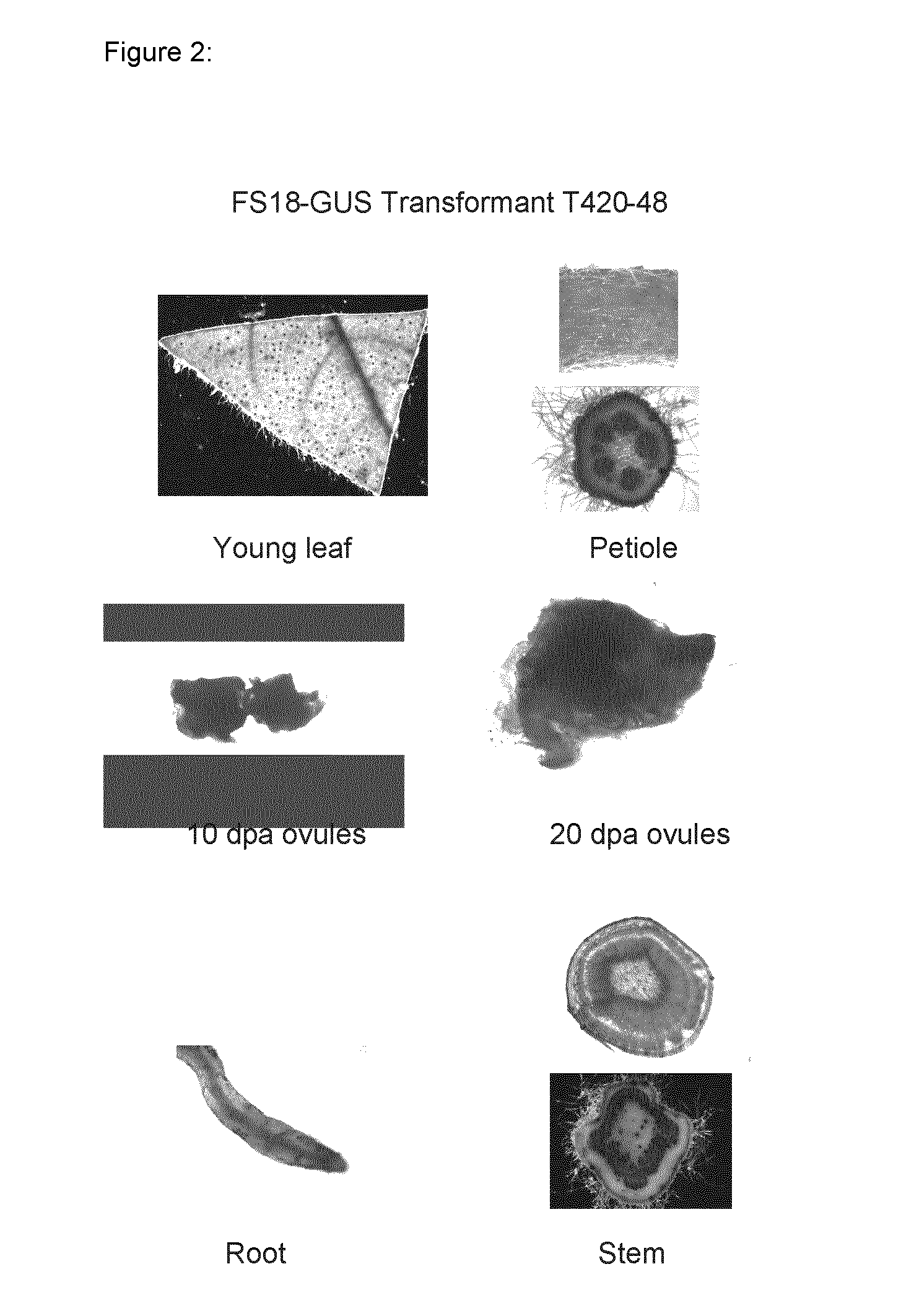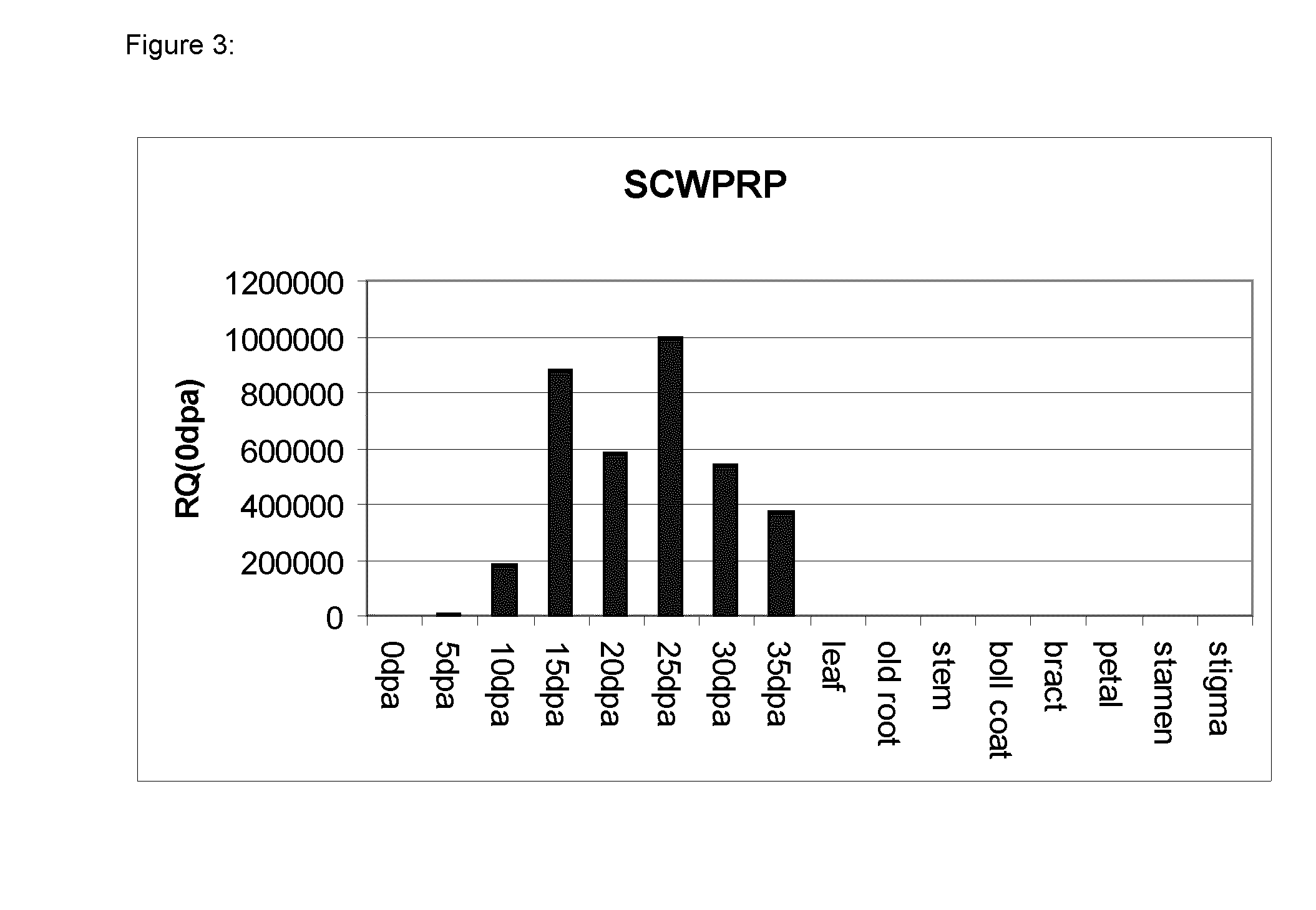Fiber selective promoters
a promoter and fiber technology, applied in biochemistry, sugar derivatives, organic chemistry, etc., can solve the problems of unclear control of gene expression by these factors, and achieve the effects of improving fiber properties, avoiding or minimizing pleiotropic effects on plant growth, and improving agricultural productivity
- Summary
- Abstract
- Description
- Claims
- Application Information
AI Technical Summary
Benefits of technology
Problems solved by technology
Method used
Image
Examples
example 1
1. Introduction and General Strategy for the Identification of Fiber Selective Promoters
[0096]In our research we aimed at the isolation of specific cotton promoters for their ability to drive the expression of chimeric genes selectively in fibers, preferably with an activity starting at the fiber elongation stage and continuing until the fiber secondary cell wall synthesis. In our experimental strategy we used both genomic tools and a candidate gene approach to isolate and test a number of cotton promoters. Bioinformatic analysis of published and existing gene expression data (EST collections, differential display, microarray analysis and candidate gene analysis) were used to identify potential candidate genes that are expressed predominantly or exclusively in cotton fibers. In our initial analysis a first list of about 450 potential fiber expressed genes was generated. This list was narrowed down through a process of examining the frequency of occurrence of ESTs homologous to those...
example 2
Expression of the FS18 Promoter in Cotton Plants
[0125]Primary cotton transformants were generated as described in example 1 with a construct comprising a chimeric gene for expression GUS under control of the FS18 promoter (pSirogateIV-FS18(3P22)GUS). T1 seeds from four independent primary transformants with high expression in 10 or 20 dpa fiber were collected and planted in the glasshouse. These lines were T420-24, T420-31, T420-37 and T420-48. Sections of cotyledons were stained with X-Gluc as previously described. Gus activity was observed in many of the plants in small glandular trichomes distributed across the cotyledon and in areas around cut edges indicating a wound response. When whole cotyledons were stained GUS activity was only observed in the glandular trichomes and in some patchy areas near edges or internally on the cotyledon presumably in areas that had been damaged during handling prior to staining or when watering plants. Not all cotyledons had this diffuse staining ...
example 3
Expression of the SCW-PRP Promoter in Cotton
[0130]T1 seeds from four independent primary transformants were generated according to the method of example 1 with a construct comprising a chimeric gene for expression GUS under control of the SCW_PRP promoter (SirogateIV-SCWPRP promoter-GUS construct) and transformants with high expression in 10 or 20 dpa fibre were collected from primary transformants generated according to the method described in example 1 and comprising a chimeric gene for expression GUS under control of the SCW-PRP promoter and planted in the glasshouse. These lines were T427-5, T427-6, T427-26-1 (introduced in example 1) and T427-31. Sections of cotyledons were stained with X-Gluc, as previously described. Gus activity was observed in many of the plants in small glandular trichomes distributed across the cotyledon and in areas around cut edges indicating a wound response. When whole cotyledons were stained GUS activity was only observed in the numerous glandular tr...
PUM
| Property | Measurement | Unit |
|---|---|---|
| temperature | aaaaa | aaaaa |
| temperature | aaaaa | aaaaa |
| temperature | aaaaa | aaaaa |
Abstract
Description
Claims
Application Information
 Login to View More
Login to View More - R&D
- Intellectual Property
- Life Sciences
- Materials
- Tech Scout
- Unparalleled Data Quality
- Higher Quality Content
- 60% Fewer Hallucinations
Browse by: Latest US Patents, China's latest patents, Technical Efficacy Thesaurus, Application Domain, Technology Topic, Popular Technical Reports.
© 2025 PatSnap. All rights reserved.Legal|Privacy policy|Modern Slavery Act Transparency Statement|Sitemap|About US| Contact US: help@patsnap.com



